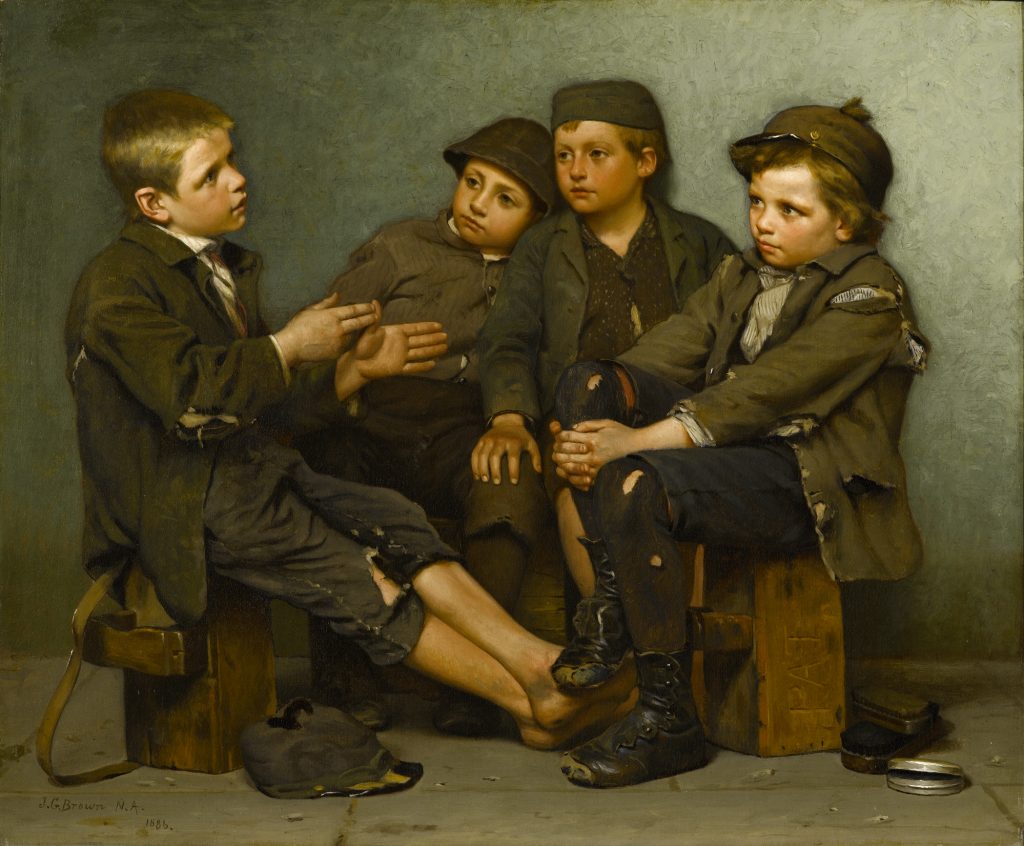1. Hold a brief class discussion focused on student perceptions of how Americans may have viewed labor, and child labor specifically, in the 1880s.
2. Assign the students to examine and analyze John George Brown’s painting A Tough Story.
3. Continue the class discussion by asking the following questions:
- What are your feelings and emotions about the boys in the picture?
- What do you believe is the general attitude (atmosphere) of this painting?
- Do you believe the children in the painting are happy or unhappy? Why or why not?
- What do you think John George Brown wanted you to feel about these children?
- This and other paintings by Brown hung in the private homes of wealthy collectors. What impact do you think this painting might have had on its owner?
4. Assign the students to examine and analyze Lewis Hine’s photographs.
5. Have the students read some information on Hine and the captions that accompanied some of Hine’s photographs.
6. Continue the class discussion focused on the following questions:
- How do these photos make you feel?
- What message is Hine communicating through his photographs and captions?
- How do Hine’s photographic images differ from Brown’s painting?
7. Assign the students to read a textbook description of child labor during the Progressive Era. Assign the students to write a one-page paper answering the following question: Which artist (Lewis Hine or John George Brown) do you think most effectively used art to change viewers’ attitudes about child labor? What elements of their works communicated these views?
Written by Zoe Voigt, Humanities Teacher
